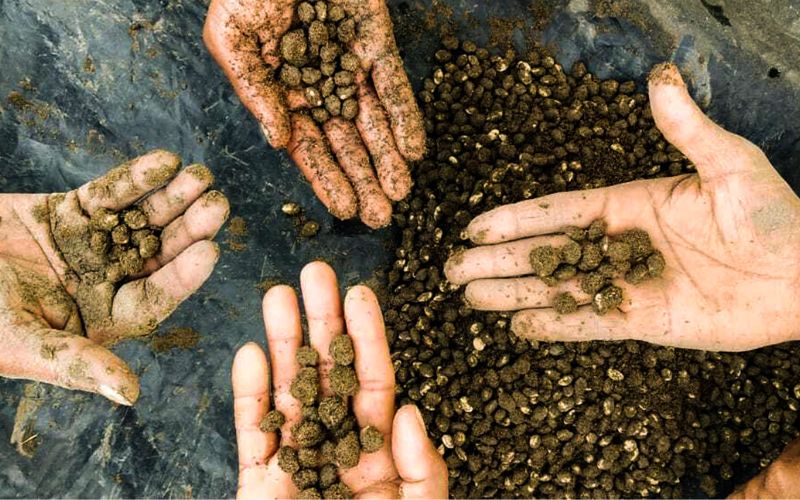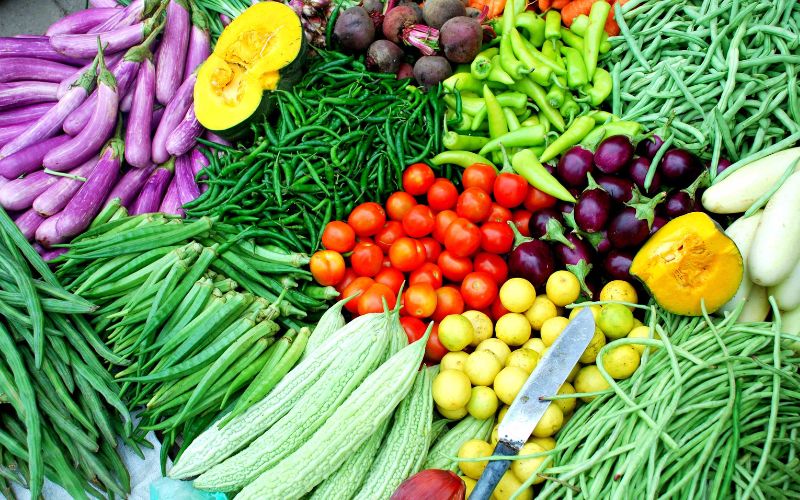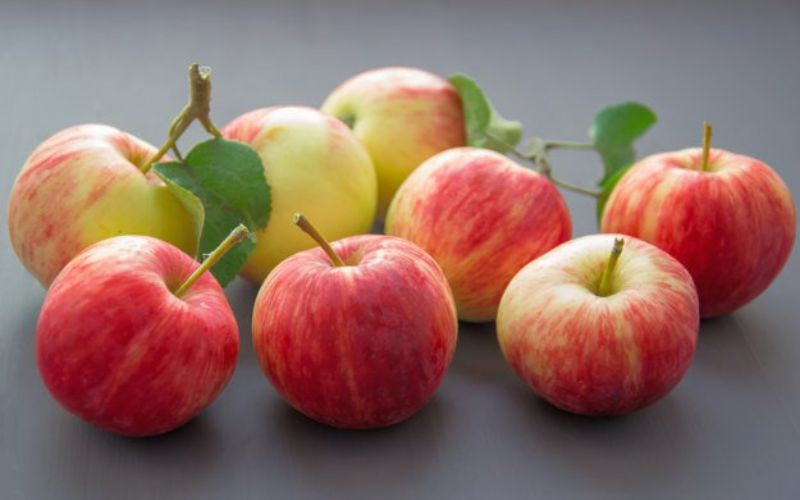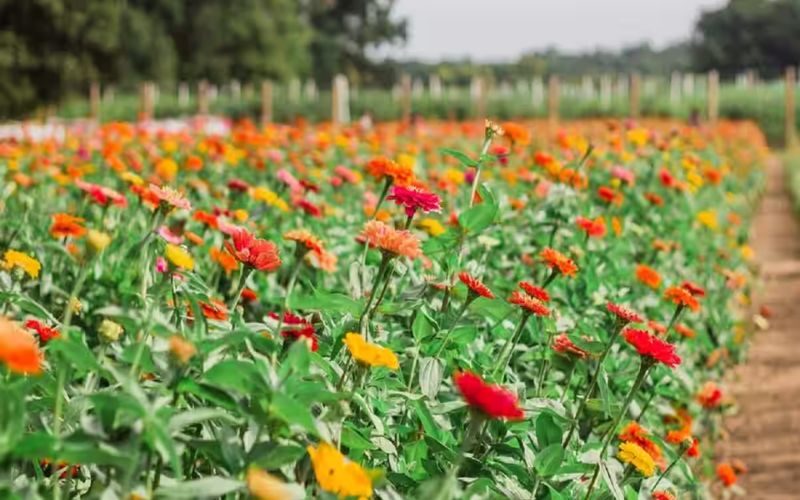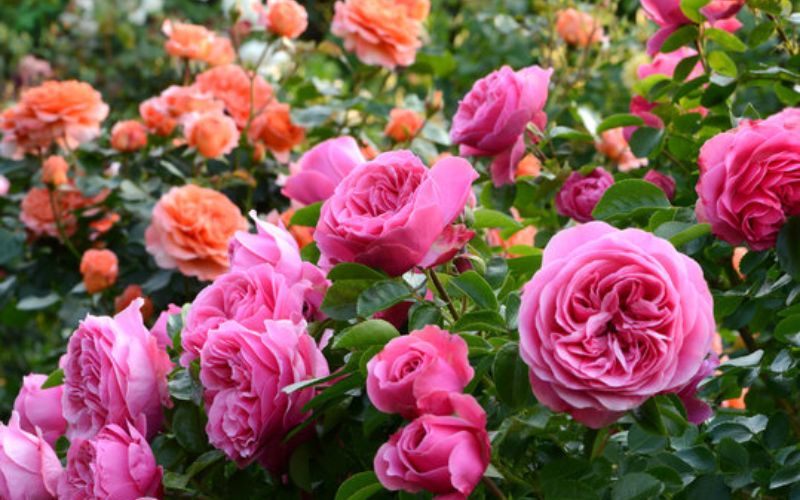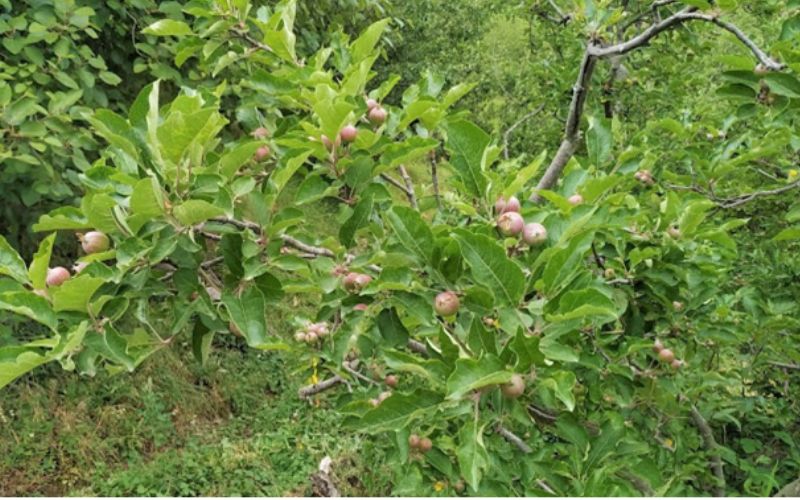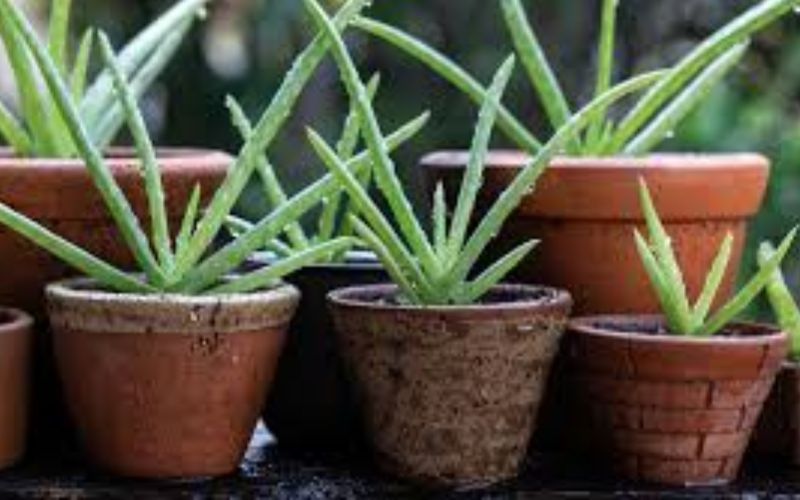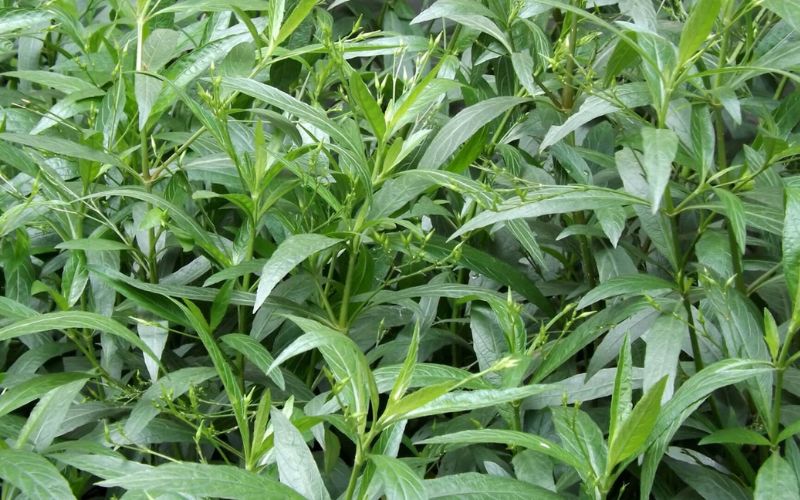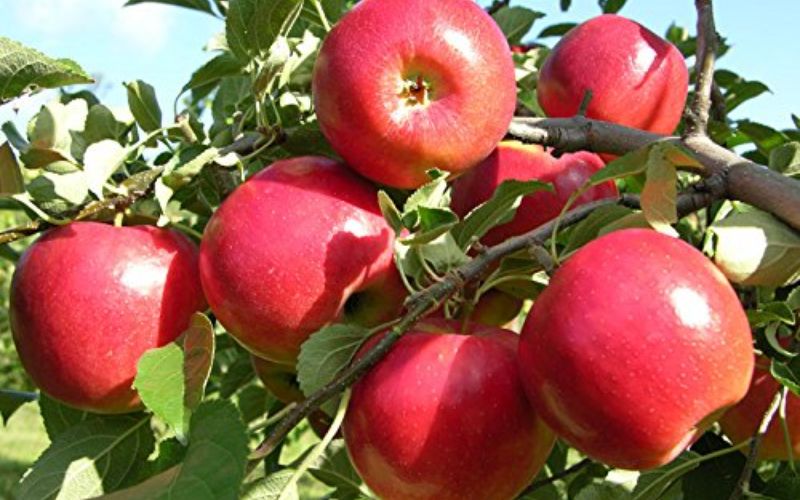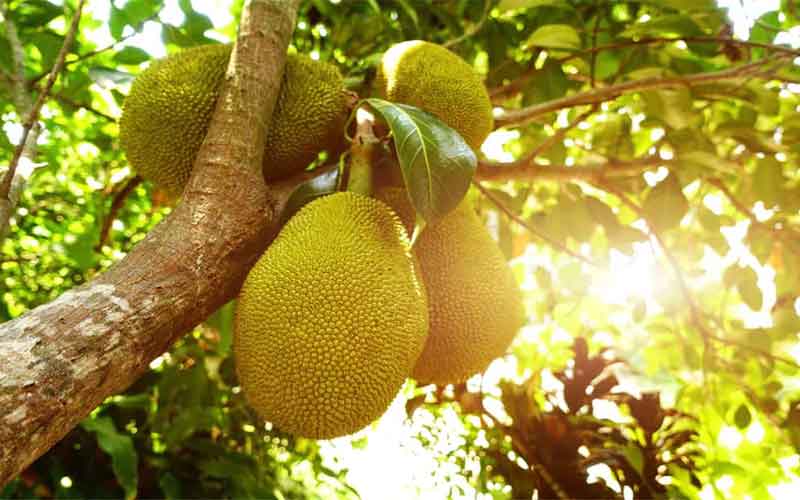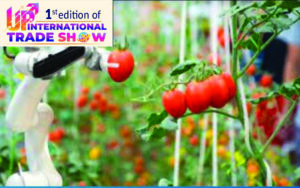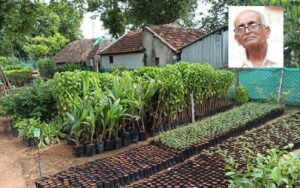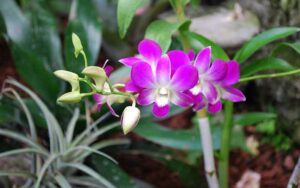Jackfruit -Not Only A Jack Of All Trade But A Master Too
Dr. R. V. S. K. Reddy & Dr. P. Ashok
Long back, Jackfruit was an insignificant, scattered or boundary crop the world over. Gradually some countries realised its importance, supported its cultivation and made value-added products. Vietnam, with 15 years history of jackfruit plantations has 50,000 hectares under jackfruit cultivation now. Malaysia, the Philippines, Cambodia and even Sri Lanka are taking aggressive efforts to promote jackfruit. Initiatives to promote the manufacture of value-added products are taking place in a significant way.
Some countries have been giving training to homemakers, street vendors and entrepreneurs in minimal processing of the fruit to arrest its wastage and create a livelihood in rural areas. Vietnam is number one in the world in making value-added jackfruit products. Sixty per cent of their production goes to industries—for mainly making vacuum-fried chips. Malaysia has included jackfruit in its national policy. Tender jackfruit in brine and canned tender jackfruit curries are popular in the country. More than a dozen companies produce a few jackfruit products for export.
Jackfruit mostly grows as a scattered tree in India. Large-scale commercial cultivation takes place only in some pockets of Tamil Nadu, Andhra Pradesh and Kerala states.
Where did it is originated?
Jackfruit (Artocarpus heterophyllus Lam.) is one of the most important and unusual fruits of the Moraceae family which includes fig and mulberry. It is indigenous to the rain forests of the Western Ghats of India and is cultivated throughout the tropical lowlands in South and South East Asia, parts of Central and Eastern Africa and Brazil.
The genus of Jackfruit Artocarpus contains about 50 species; most are native to Asia . The three most important species are Breadfruit A. altilis (syn. A. communis; A. incisus), Jackfruit A. heterophyllus (syn. A. integer; A. integrifolius) and its close relative, Chempedak, A. integrifolia (syn. A. polyphema; A. chempeden).
About the tree
The tree produces long taproots. All parts of the tree produce milky white sticky latex. Jack fruit flowers are borne on stout twigs, on the trunk and older branches. The tree is monoecious, producing male and female flowers. The stem of this plant is straight and rough whereas the bark is green or black, 1.25 cm thick and exudes milky latex.
Female flowers are only borne on short shoots emerging from the trunk and main limbs, male flowers occur on shoots in the periphery of the tree canopy, particularly in vigorously growing trees. At anthesis, the male flowers are dusted with sticky yellow pollen and emit a sweet scent which attracts small insects such as flies and beetles. These may be the pollinating agents, but few insects visit the female flowers and in India pollination has been reported to be affected by wind. After anthesis, the male flowers turn blackish and drop off. The fertilized female flowers develop into mature fruits after 3 months or more, depending on the seedling or clone.
About the fruit
Fruits are oblong-cylindrical in shape, typically 30–40 cm in length but sometimes up to 90 cm. They usually weigh 4.5–30 kg, although a weight of 50 kg has been reported. The heavy fruit is borne primarily on the trunk and interior part of the main branches. Fruits take 90–180 days to reach maturity.
The thick rubbery rind of Jackfruit has short, blunt spines and the fruits inside are made up of large, yellow bulbs enclosing an oval light brown seed. There are 100-500 seeds in a single fruit. There are two types of fruits, soft flesh (softer, much sweeter with a darker gold-colour flesh than the hard types) and firm flesh (more crunchy, drier and less sweet but fleshier). Seeds are light brown to brown, rounded, 2–3 cm in length by 1–1.5 cm in diameter, and enclosed in a thin, whitish membrane. Up to 500 seeds can be found in each fruit. Seeds are recalcitrant and can be stored for up to a month in cool, humid conditions.


Production Status in Andhra Pradesh
In Andhra Pradesh, jackfruit is being grown in Srikakulam, Vizianagaram, Visakhapatnam, East Godavari, West Godavari, and Krishna districts. It is widely raised by the tribals of the high-altitude Eastern Ghats region grown in backyards and grown for shade in betelnut, coffee, pepper, and cashew plantations however, few trees of jackfruit are being maintained by fruit growers in their orchards in the plains. The jack fruit trees naturally exist in their farmlands and produce fruits without much human intervention. The coconut gardens of the delta region of East Godavari district have plenty of these trees. As per the Department of Agriculture and cooperation & APEDA,2019, Jackfruit occupies an area of 180 hectares with a production of 6280 tonnes.
Jackfruit-A fruit of diversity
In Andhra Pradesh, Jackfruit shows a considerable range of variation in morpho-agronomic characteristics, and this may be because jackfruit trees are cross-pollinated and are mostly propagated by seed. A considerable variation between trees has been observed for the traits such as growth habit, canopy structure, leaf size, fruit shape, size, colour, fruit-bearing (age and seasonality), and maturity.
Jackfruit has innumerable types in Andhra Pradesh with varying fruit characteristics. The types differ among themselves in the shape and density of spikes on the rind, bearing, size, shape, latex, flake size, flake colour, quality, and period of maturity. Innumerable variations in bulb sweetness, acidity, flavour, and taste are observed in jackfruit growing areas. Such a wide diversity among jackfruit types in Andhra Pradesh offers tremendous scope for the improvement of this crop by selection. Due to cross-pollination and the predominance of seed propagation over a long period of time, there is a high degree of variability within the species.
Dr YSR Horticultural University has attempted sporadically to collect germplasm. A major effort has been made to initiate selection by carrying out standard characterization and identification of trees with desirable characteristics and the work has been carried out through the All India Coordinated improvement Project on Fruits at Horticultural Research Station, Venkatramannagudem of West Godavari District.
So far 40 accessions of jackfruit were collected and evaluation is in progress. Of these, 26 accessions are of edible types with large to medium-sized fruit, moderate to high TSS having varying fruit shapes. Four vegetable types were identified. Ten red flake genotypes were collected. Efforts are being made to collect elite accessions from West Godavari district, Visakhapatnam and Vizianagaram and Srikakulam districts. Under evaluation, a genotype named as Dosakayalapalli was found to be promising with high quality, small round fruits with cluster-bearing habits.
Popular varieties
Three types of jackfruits are available, according to their carpel or flake texture (i.e crisp, medium and soft carpels). Fruits having crisp carpels are preferable over other types in the market. Among the crisp carpel types Singapore or Ceylone, Palur and Muttamvarikka are the important cultivars in Jackfruit.
How to cultivate jack on a commercial scale
Jackfruit grows well and gives a good yield in the warm humid climates of hill slopes and the hot humid climate of plains. The crop grows successfully from sea level up to an elevation of 1200 M at an optimum temperature range of 22-35OC. It cannot tolerate frost or drought and higher atmospheric humidity, especially during the flowering and fruiting periods. It can be grown in all types of soils with sufficient drainage, but red sandy loams with a pH of 6.0 to 7.0 are preferable.
Tree Shapes



Planting
Planting is done preferably during the rainy season from July to October. Planted at 10x 10 m spacing @ 40 plants/acre or 100 plants/ha. Pits of 1.0 m3 should be made for planting the grafts and the dug soil is mixed with 25 kg FYM, 2 kg single super phosphate and 100 g folidol dust.
Fertilizer Recommendation
The following fertilizers are applied during the rainy season as per the age of the tree. If irrigation is available, they can be split into two doses and applied twice a year i.e., during June –July and September–October along with 50 kg FYM per plant/year. The manures and fertilizers can be applied in a circular trench taken 50-60 cm away from the trunk.
150 g N2 + 80 g P2O5 + 175 g K2O per tree/year (2-5 years old)
200 g N2 + 100 g P2O5 + 250 g K2O per tree/year (5-8 years old)
400 g N2 + 120 g P2O5 + 450 g K2O per tree/year (above 8 years)
After care
Irrigation should be done depending upon the type of soil and season; care should be taken to avoid moisture stress during flowering and fruiting periods. Green manure crops have to be raised and ploughed in situ to improve soil fertility. Intercrops like pulses and vegetables can also be grown in interspaces until the trees grow. Flowering occurs from December to January, female flowers appear on the trunk and main branches, while male flowers appear on current season growth on a canopy. Hand pollination is necessary for obtaining good fruit shape and also for better pollination if jackfruit plants are less than four numbers in the area.
Plant protection
Spraying of Mancozeb @ 2.5 g/L or copper oxy chloride @ 3.0 g/L can be taken up at regular intervals during the fruiting season for controlling the fruit rot.
Harvesting
Normally jack starts producing fruits from 7th– 8thyear onwards. Grafted plants start to yield from the 4th– 5thyear itself. In Singapore jack, even seedlings start bearing from 3rdyear. Fruits will be available from March to June. In higher elevations harvest extends up to September. Even in plains, certain genotypes bear an off-season crop from October – December. The yield ranges from 20 to 100 fruits/trees. The fruit weight varies from 10 to 30 kg.
Value-added products from Jackfruit
Apart from its use as a table fruit, jack is a popular fruit for the preparation of pickles, chips, jack leather and papad. The fruit pulp is sweet and tasty and is used as a dessert or preserved in syrup. The fruits and seeds are also processed in a variety of ways for food and other products. Jackfruit value-added products include chips, papads, pickles, ice cream, jelly, sweets, beverages like squash, nectar, wine, and preserved flakes, etc. The ripe bulbs can be preserved for one year in sugar syrup or in the form of sweetened pulp. The unripe mature bulbs can be blanched and dehydrated for further use throughout the year. Seed is a rich source of starch and a delicacy during the season. The timber is highly valued for its strength and sought for construction and furniture. The dried leaves are stitched to make disposable plates.
Nutritional and medicinal properties of jack fruit
Jack fruit is rich in vitamins and minerals. It can act as a source of complete nutrition to the consumers. The fruit is equivalent to Avocado and olive in terms of the healthier mix of nutrients for human dietary needs. Ripe fruit flakes (bulb) contain carbohydrates (16-20 %), total soluble solids (25-29°brix), carotene (500-580 IU), thiamin (30 g), pectin (1.5-6%) and minerals like iron (500 mg), phosphorus (30-40mg) and calcium (20-30 mg)/100 g of edible portion.
Health benefits of Jackfruit
• Jackfruit is an excellent source of vitamin C, which helps to protect against viral and bacterial infections. Vitamin C helps to strengthen the immune system.
• Jackfruit is also rich in phyto-nutrients such as lignans, isoflavones and saponins which have anti-cancer and anti-ageing properties.
• The presence of high fibre in the jackfruit, prevents constipation and helps in smooth bowel movements.
• Jackfruit contains vitamin A, a powerful nutrient which is known to maintain a healthy eyes and skin. Potassium contained in Jackfruit has been found to be helpful in lowering blood pressure and thus reducing the risk of heart attack as well as strokes.
• Jackfruit also contains iron which helps to prevent anaemia and also helps in proper blood circulation in our body.
Keeping the above-said points in view, there should be an awareness-building campaign on the benefits of Jackfruit so that local consumption and demand goes up for cultivation and to develop value-added products.


